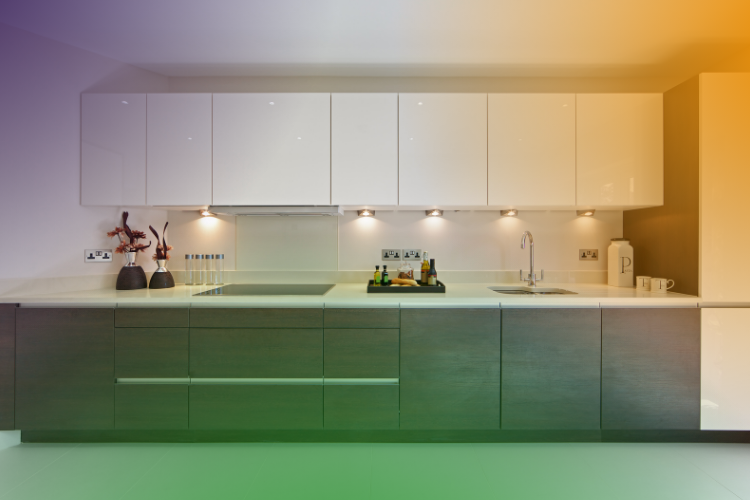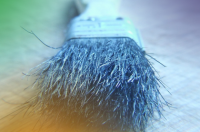Wrap or Respray Kitchen Cabinets? (2025 UK Guide)
If you want to give your kitchen a fresh, modern look without replacing the cabinets entirely, wrapping or respraying are two of the most effective ways to transform the space. Both offer a major visual upgrade at a fraction of the cost of a new kitchen.
This 2025 guide explains the differences, costs, pros and cons, and includes a full FAQ section to help you decide which option is right for you.
What Is Kitchen Wrapping?
Kitchen wrapping uses high-performance vinyl (similar to car wrapping vinyl) applied directly to cabinet doors, drawer fronts, end panels, and sometimes worktops.
Features of modern vinyl:
- Huge colour range: matt, gloss, satin, woodgrain, metallic, concrete, marble effects and more.
- Designed to last 5–10 years with proper installation.
- Applied on-site by specialist wrappers.
- Reversible and removable without damaging most surfaces.
Best for:
- Flat or lightly profiled doors.
- Quick, affordable makeovers.
- Trend-led finishes like concrete or marble.
How Much Does Kitchen Wrapping Cost in 2025?
Costs depend on kitchen size, number of doors and drawers, condition of cabinets, and vinyl quality.
Typical UK price ranges:
- Small kitchen: £500–£700
- Medium kitchen: £700–£1,000
- Large kitchen: £1,000–£1,500+
- Full premium wrap: £1,500–£4,000
- Per door price: £50–£250 depending on size, shape and vinyl finish.
Most companies will request photos or a home visit before quoting.
What Is Kitchen Respraying?
Kitchen respraying is a professional process where your existing cabinets are spray-painted using durable coatings (usually 2K polyurethane or specialist cabinet paint).
Process includes:
- Degreasing, cleaning and sanding.
- Removing doors to spray in a controlled workshop.
- Priming to ensure adhesion.
- Spraying multiple thin coats for a flawless finish.
- Reinstallation and adjustments.
Best for:
- Wooden or high‑quality existing kitchens.
- Traditional Shaker or panel-style doors.
- Long-lasting, durable finishes.
How Much Does a Kitchen Respray Cost in 2025?
Typical UK price ranges:
- Small kitchen: £1,200–£1,500
- Medium kitchen: £1,800–£2,200
- Large kitchen: £2,500+
- Overall range: £850–£2,500+ depending on complexity.
Respraying is often more expensive than wrapping, but the finish usually lasts longer.
Wrap vs Respray vs Paint (Quick Comparison)
|
|
|
|
|
|
|
|
|
|
|
|
|
|
|
|
|
|
|
|
|
|
|
|
Pros & Cons of Kitchen Wrapping
Pros:
- Fast installation (1–3 days).
- Massive range of finishes.
- Reversible.
- No need to remove doors.
- Budget-friendly.
Cons:
- Vulnerable to heat, sharp edges and poor preparation.
- May peel on badly damaged or textured doors.
- Vinyl isn't easily recyclable.
Pros & Cons of Kitchen Respraying
Pros:
- Smooth, factory-style finish.
- Huge colour choice with colour-matching.
- Hard-wearing and long-lasting.
- Ideal for solid wood or high-quality MDF.
Cons:
- Higher cost than wrapping.
- Doors are usually removed.
- Some disruption during the process.
FAQs: Wrapping vs Respraying Kitchen Cabinets (2025)
1. Does wrapping damage the cabinets?
No—vinyl wrap is designed to be removable without damage. However, surfaces like swollen MDF or peeling laminate may need repair first.
2. How long does kitchen wrap last?
High-quality professionally installed wraps typically last 5–10 years.
3. Can vinyl wrap peel?
It shouldn’t peel if properly installed, but poor installation, high heat near ovens, or moisture behind the vinyl can cause lifting.
4. Is respraying better than wrapping?
Respraying is usually more durable and offers a factory-quality painted finish, but it costs more. Wrapping is better for quick transformations or trend finishes.
5. Can all cabinet doors be wrapped?
Flat doors are easiest. Deeply grooved doors or damaged surfaces may not hold vinyl well.
6. Can all doors be resprayed?
Yes—wood, MDF and laminate can all be spray-painted. Gloss surfaces need extra prep.
7. How long does a respray last?
A professional respray can last 7–10+ years with proper care.
8. What finishes can I get with respraying?
Matt, satin, eggshell and gloss. Colour-matching is available for brands like Farrow & Ball, Little Greene and RAL shades.
9. Which option is most eco-friendly?
Respraying tends to be more eco-friendly than wrapping because vinyl is a plastic product that isn't easily recycled. Both are greener than replacing the whole kitchen.
10. Will wrapping or respraying increase my home’s value?
Yes. Both can refresh and modernise a tired kitchen, which is a major selling point for potential buyers





